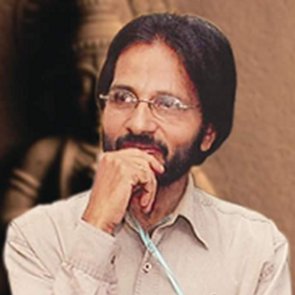
|   |

|   |
Entrancing aesthetic navigation - V. Kaladharan e-mail: kaladh@rediffmail.com Photos: Nila Photography March 16, 2024 The highlight of this year's Nishagandhi Festival held in February at the Kanakakkunnu Palace in Thiruvananthapuram, the capital city of Kerala, was undoubtedly the Bharatanatyam recital of the eminent dancer Malavika Sarukkai. While most of the well-known dancers from south India are very much visible in the cultural festivals of Kerala year after year, Malavika is seen here only once in a while. This too could be the reason why her recital attracts the attention of hundreds of dance lovers within and outside the city. I travelled all the way from Kochi to Thiruvananthapuram mainly to see the multi-dimensional terrains of her artistry. Noted dancer Rajashree Warrier, facilitated the revisit of Malavika to Thiruvananthapuram after a prolonged interregnum of silence.  Malavika began her recital with the visualization of select lines from Sooryashtakam in raga Sooryakantham and talam adi. The depiction of Sun, the blazing deity, riding in a golden chariot driven by seven horses was an amazing spectacle as the movements and articulations of the dancer instinctively coalesced into the import of the lines and its music. The piece de resistance of her recital was Mareechavadham, an excerpt she choreographed from the Ramacharitamanas of Tulasidas many years back. Its all too familiar theme retained an unusual fragrance as Malavika treated the characters involved with the magical touch of her virtuosity. As Sitadevi overwhelmed by the lush green plants, trees, birds and animals, as Ravana ordering his uncle Mareecha to disguise himself as a deer and to walk into the hermitage Panchavati, Mareecha's reluctance, dilemma and his final decision to obey the demon king, Rama chasing the deer with his bow and arrow and the redemption of Mareecha, Malavika's switching from one character to the other and the spatiotemporal transitions all the while keeping the dramatic nuances in tact were an incredible visual treat. The transition of Rama's bhava from curiosity and amusement to suspicion and inauspiciousness showed Malavika's subtle sense of satwikabhinaya. Incidentally I am compelled to mention here the role of Srirama enacted by Kalamandalam Gopi, the living legend in Kathakali, in Paris way back in the early 1980's. In the scene of chasing the ‘deer', Gopi too did the same but with a little more theatrical flourish which the art form concerned can afford. "Lalita lavanga lata pariseelana" is an ashtapadi that unravels a bewitching contradiction; Radha suffering from the pangs of separation while her Lord, Krishna, is frolicking with the rest of the Gopikas. When it comes to the visualization of the lush green plants, the tender creepers, the gentle breeze, the fluttering honey bees, the singing cuckoos and the intoxicating scent of flowers viz a viz the lamentations of the separated heroine, Malavika is simply irresistible. The fluency and the loveliness with which she made it memorable defy words. The finale of her recital was the popular Thillana of Lalgudi Jayaraman in raga Mohanakalyani, followed by Vande Matharam holding aloft her unmistakable stamp.  While watching any recital, be it Bharatanatyam, Odissi, Kuchipudi or even Mohiniyattam, I am often tempted to divert my attention to the music, both vocal and instrumental. Murali Parthasarathy's full throated singing carried the performance of Malavika to a higher altitude. There was not even a single moment in Murali's music that overshadowed the visual frames. The fingerings of Nellai Balaji on the mridangam, as always, were admirably interwoven with the hastamudras, facial expressions and the footwork of the dancer. Sreelakshmi, the violinist, deserves special mention for she created an aural tapestry while Malavika as Sita portrayed the gorgeousness of the hermitage Panchavati. Almost all the recent recitals of Malavika inform the rasikas that her selection of items is consciously oriented towards a pan-Indian cultural phenomenon. By dispensing with the weighty Varnams, either of the Tanjore Quartet or others like Dandayudhapani Pillai or the like, Padams of renowned lyricists like those of Annamacharya or javalis of Kshetrayya or the like, Malavika seems to be engaged in a mission to redraw the contours of Desi and Margam in Bharatanatyam.  Former Deputy Registrar of Kerala Kalamandalam, V Kaladharan is also an art critic. He has published several articles at the academic level. 'From Meditative Learning to Impersonal Pedagogy' was published in an anthology 'Qui Parley' initiated and released by scholars and writers from the University of California, Berkeley. His articles on Indian performing arts and literature regularly appear in magazines and journals, and in the Friday Page of The Hindu. |